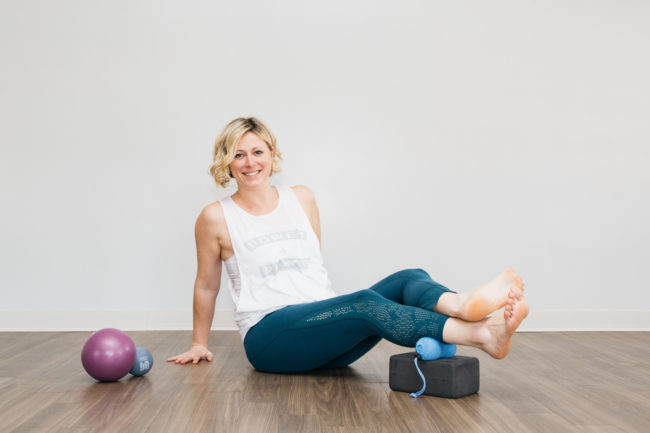What kind of balls now?
 What are therapy balls?
What are therapy balls?
Therapy balls are, quite simply, grippy rubber balls of all shapes and sizes that you can use to access deep tissue release and self massage all over your body.
How is this different from getting a massage or foam rolling?
When it comes to foam rolling – you can get a great general release for large masses of muscles / muscle groups. But if you wanted to get into more specific nooks and crannies or move around bony landmarks of the body then a foam roller isn’t going to cut it. And the difference between this and a deep tissue massage is twofold: cost and svadhyahya. Tune up balls or other similar tools range between $10-20 and last for well over a year for most people (depending on how often you use them). Compare them to a $150+ deep tissue release from a well trained body worker and the savings are clear.
The second difference is svadhyahya, or the sanskrit word for “self knowledge” or “self study.” It’s frightening that most of us know more recipes or song lyrics than we know muscles and bones in our own body. Our inner landscape is often such a mystery to us. In many cases, we only listen to our bodies when they present pain or illness. But our bodies are communicating with us all the time in subtle ways. Ball rolling is a way to start to map and understand the landscape beneath the surface. As you start exploring your body with ball rolling, you’ll start to notice signs and signals of what is happening beneath the surface. When you understand where you might be a little stuck, asymmetrical or confused – then you can start to work your body back towards balance – healing pain, improving performance and improving nutrient delivery and hydration to your tissues.
Who can benefit from ball rolling? I’m not a professional athlete, for example – will this be useful for me?
The state of your body can be dependent on 5 factors: age, stage of development, trauma, learned movement and genetics. Say my mother always stood with her right hip kicked out to the side. There’s a strong likelihood that I also that way. If my right hip is kicked out then my whole right leg is holding tension and contraction differently than my left leg. So when I walk, run, hike or move around the house – my right leg is sending shock and tension up through the ankle, knee, hip and low back joints differently one one side than the other. My low back doesn’t like this because we are designed to absorb shock better when we’re symmetrical. I now have chronic low back pain. I could have scar tissue from a previous surgery that is hard, dense and stuck to other muscles and now one area of my body doesn’t move and glide the way it’s supposed to so all the other areas around it are compensating and I have referred pain in other areas because those muscles are doing jobs they aren’t supposed to be doing. The list goes on and on. When we say ball rolling can “improve performance” – we could mean the performance of getting out of bed, walking to pick up your paper OR running a marathon.
Will using therapy balls help my yoga practice / weightlifting / dance / running / cycling / boxing / rock climbing / other active hobbies?
The short answer is – absolutely. Because we get a large yoga audience we’ll often test yoga poses. I’ll bring students into down dog – when their heels don’t touch the ground they often say “it’s because my hamstrings are too tight.” Then I’ll roll their feet and calfs. We come back into down dog and the difference is measurable for 90% of students – heels closer to the floor. The difference in performance is immediately recognizable. Squatting in weightlifting requires proper knee to toe alignment in external rotation – if the hips can’t rotate out and the knee collapses then weight lifters can grind on the cartilage in their knees – they may need to relax their internal rotators with ball rolling OR just get a better sense of (ability to propriocept) where the strength comes from in external rotation – which is also a major focus of ball rolling. Dancers on the other hand are extremely externally rotated, helping the external rotators relax so they can walk with toes and knees pointing straight ahead is better for the health of their knees. We can look at any way that sport challenges the body and creates asymmetries and leverage ball rolling to realign the body, reduce liklihood of injury and improve performance.

